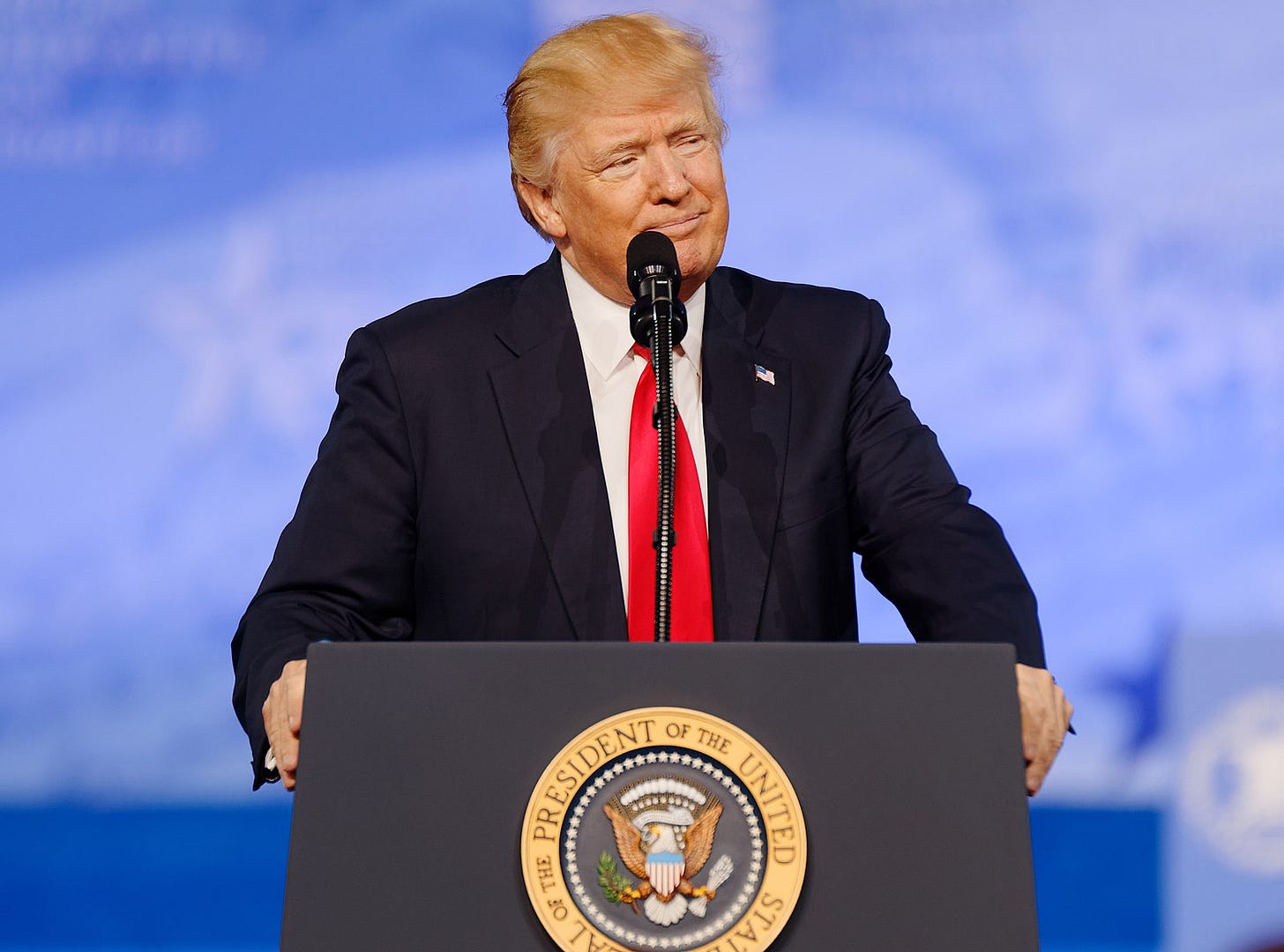Editor’s Note: A previous version of this post featured excessive typos and spelling errors - it had been published as I was being rushed out of the CPAC conference hall seating area. And I wanted to get this out to you! Thank you to our readers for noting it and letting me know.
I have spent the last two days at CPAC, the Conservative Political Action Conference that, at least until recently, was the conservative and Republican event of the year. I first came here, I think, in 2013 as a young man working in counter-jihad politics in the UK and Europe, mingling with a broad crowd of American Republicans who were still trying to find a new direction as they prepared to replace President Barack Obama.
I remember that the party felt like it couldn’t really decide what it stood for. There were anti-abortion activists here, there was still an ongoing debate about whether or not the Log Cabin Republicans should be allowed there, and speakers were being tossed out for being too opposed to immigration or too vocal about the threat of Islamism.
The crowds were certainly bigger back then, but there was no real movement. They knew they hated Obama and they wanted the Democrats out, but it seemed evident to me that the Republican Party needed to dramatically change if it wanted to win again. I’d meet people who took a great interest in what was happening in Europe, who could see that things were changing, but who still felt uneasy about adopting anything the European Right was doing at the time over fears of becoming a little too socialist.
In 2025, things look quite different. Having spoken to members of the media here, it’s not just me who sees how different things are now.
“It’s MAGA Fest this time,” one reporter said to me. And it is.
Probably more than half of everybody here was wearing some form of MAGA gear. There was the “Dump Lindsey” crowd wearing their hats and T-shirts, the Make America Healthy Again gang celebrating the recent confirmation of Robert F. Kennedy Jr., a bunch of people selling and wearing “MAKE FRIES GREAT AGAIN” jackets, a sea of newly-pardoned January Sixers, and Media Row (the area where radio and TV hosts record coverage of the event) looked more like a Trump PR zone. And I suppose it sort of was.
On a personal level, I was sad to see fewer familiar faces here than I used to—but times change, and so has the Republican Party. After spending time advocating for Kennedy’s third-party campaign, I felt like giving up on the Republicans. After Kennedy joined the campaign, I hesitantly backed him. Having seen Kennedy confirmed, I’m now generally supportive—and I have to say, I thought Trump’s speech here was excellent, and I leave this conference feeling confident that he will follow through on things he didn’t do last time, and make huge changes to the federal government that will hopefully put less financial pressure on the American people and restore faith in government. Even if there are contingents of this movement with which I do not agree or generally support. But I can’t help but wonder what comes next.
Trump Fest will end in 2028, and what then? I expect that the government will look very different and the new Republican Party will have firmly cemented itself as a party that, in many ways, resembles the European Right’s model—without the socialized health care (they still say that’s communism—some things never change!). I hope that whoever emerges as Trump 2.0—and, any winning candidate will almost certainly need to position themselves as Trump 2.0, assuming that Trump’s agenda works and remains popular—understands that this movement didn’t win because the American people shifted to the hard right. The reality is that Trump won by moving left. He moved left with Kennedy on health. He moved left (or to the center, as he said today), with his Labor Secretary pick Lori Chavez-Deremer. He moved left on IVF. He moved left on gay representation in the Republican Party. He brought the best of the Democratic Party and (mostly) the best of the Republican Party together. And that’s a winning strategy—not just electorally, but morally, I think.
It seems right now that J.D. Vance is the natural candidate to replace him, but four years are an eternity in politics. If it’s him, we’ll have seen by then whether he’s the pro-worker candidate he seemed to be from the start, with the emergence of AI already disrupting the job market. We’ll also see how well he’s able to adapt to the left-right alliance created thanks, in large part, to RFK Jr.’s and Tulsi Gabbard’s endorsement of Trump. I certainly hope he understands the significance of a movement like this, and that whoever emerges as the Republican candidate is eager to grow that movement into a big-tent, pro-America movement that ditches the poison of the far left and the far right.
If they don’t, then who’s to say a Democrat won’t win by a small margin in 2028 and begin the slow and arduous process of unraveling everything Trump does over the next four years?




